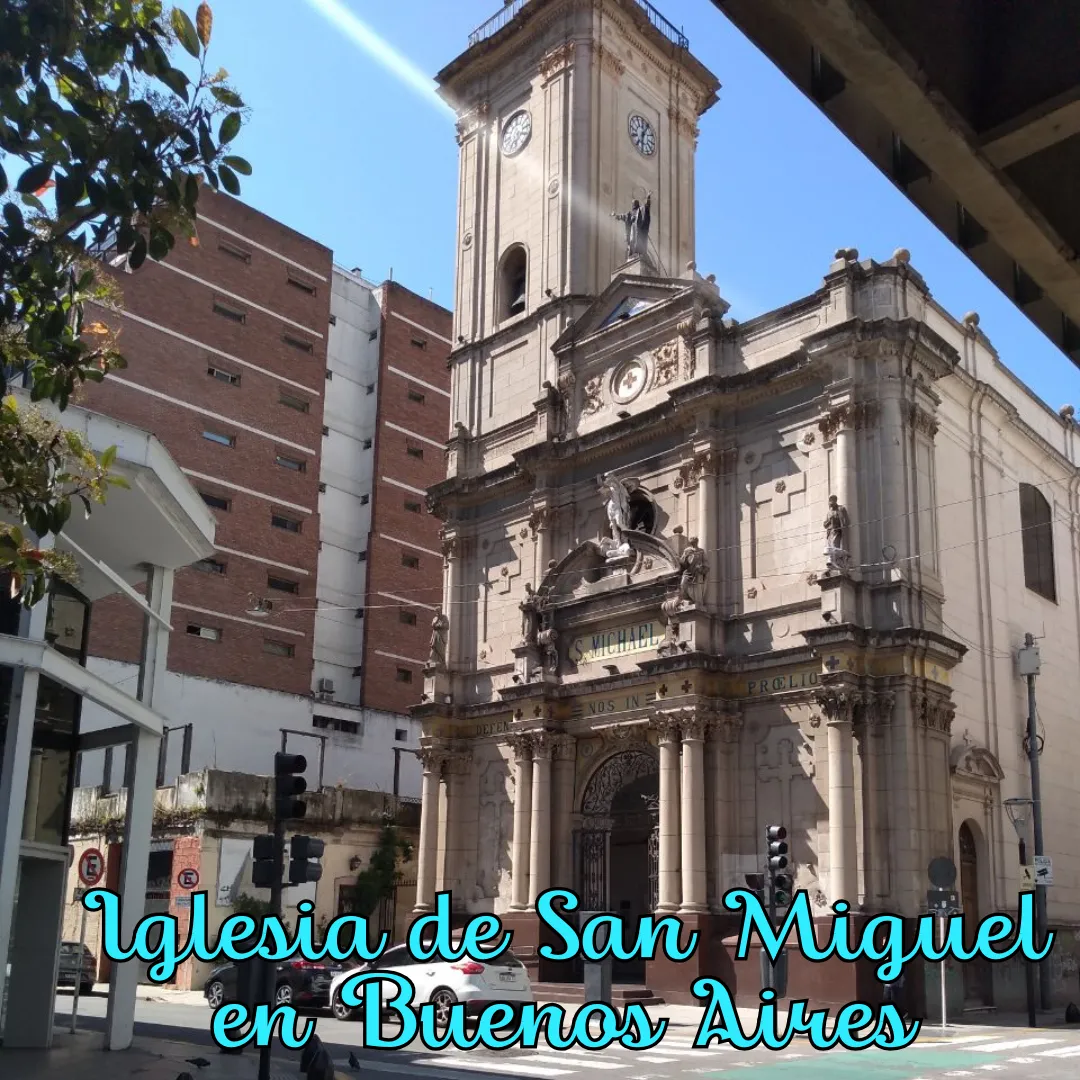
Sometimes, it happens that things and experiences come without having sought them out. That's how, walking the streets of Buenos Aires, I stumbled upon this majestic Renaissance-style church, located near the iconic Buenos Aires Obelisk, a visual reference of Argentina in the world.
Located on the corner of Suipacha, and surrounded by colonial-style buildings used as offices and parking spaces, this church was a discovery of something I wasn't expecting. Perhaps, having been feeling sad due to personal issues in the previous days, led me on this aimless walk to visit it on Bartolomé Mitre street in the San Nicolás neighborhood of Buenos Aires.

Although I profess the Catholic religion, I am not a regular churchgoer, especially now that my time is quite limited, however, upon seeing this monument, it was irresistible not to want to enter, and luckily it was open.
It is an asymmetrical structure with 3 sections, where the one on the left stands out for being the tallest, as that is where the bell tower is located.
Impressive double columns support the second floor of the entire church, while the third is supported by simple columns. In the middle, there is the entrance door, where the figure of Archangel St. Michael steps on the representation of the evil angel. Across the door, you can read the phrase "S. Michael defend us in battle."
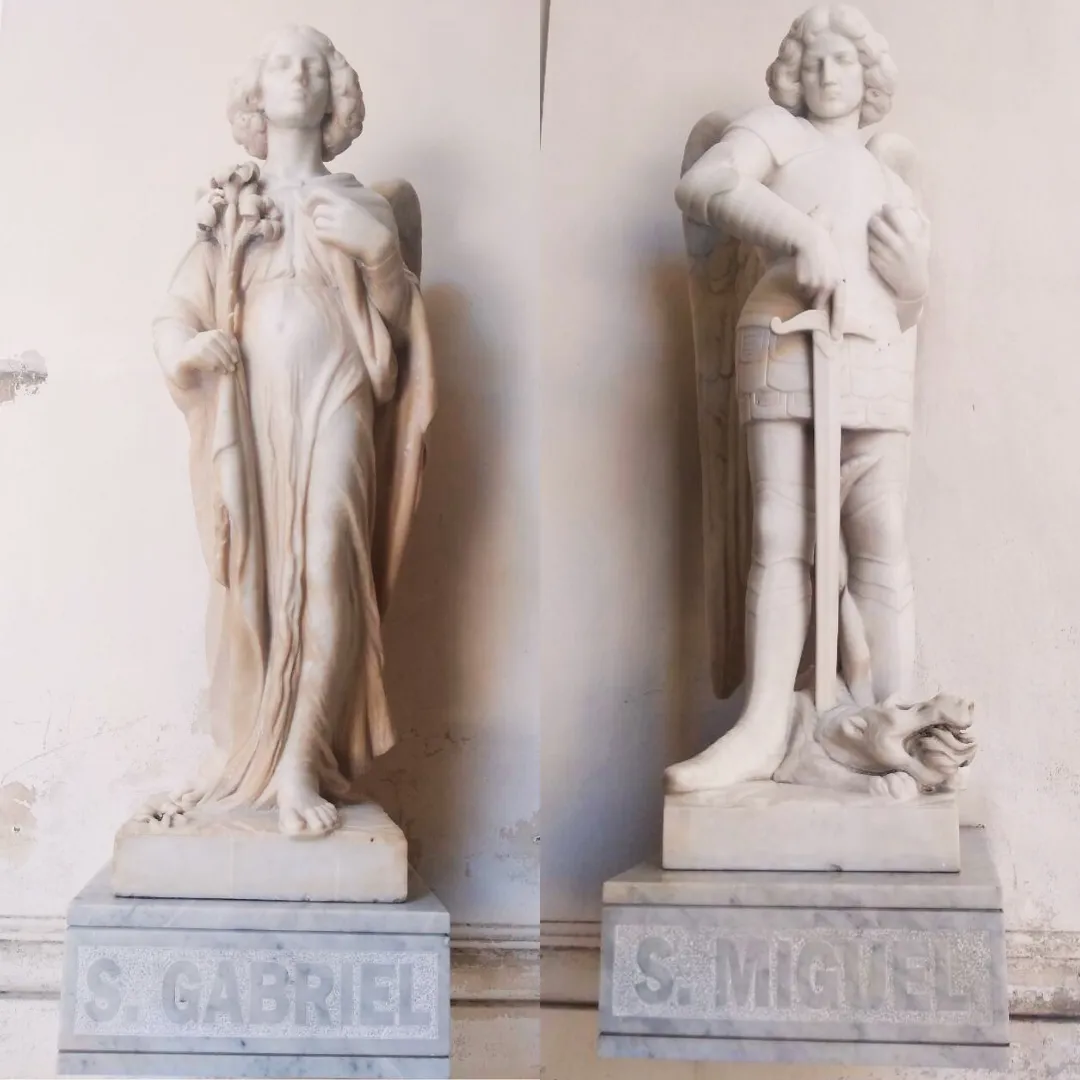
But if it already seemed beautiful from the outside, the magic happened when I entered. Two white statues representing St. Gabriel and St. Michael guard the second wooden entrance door, where part of the church's history can be read, such as the date it was erected on November 3, 1830.
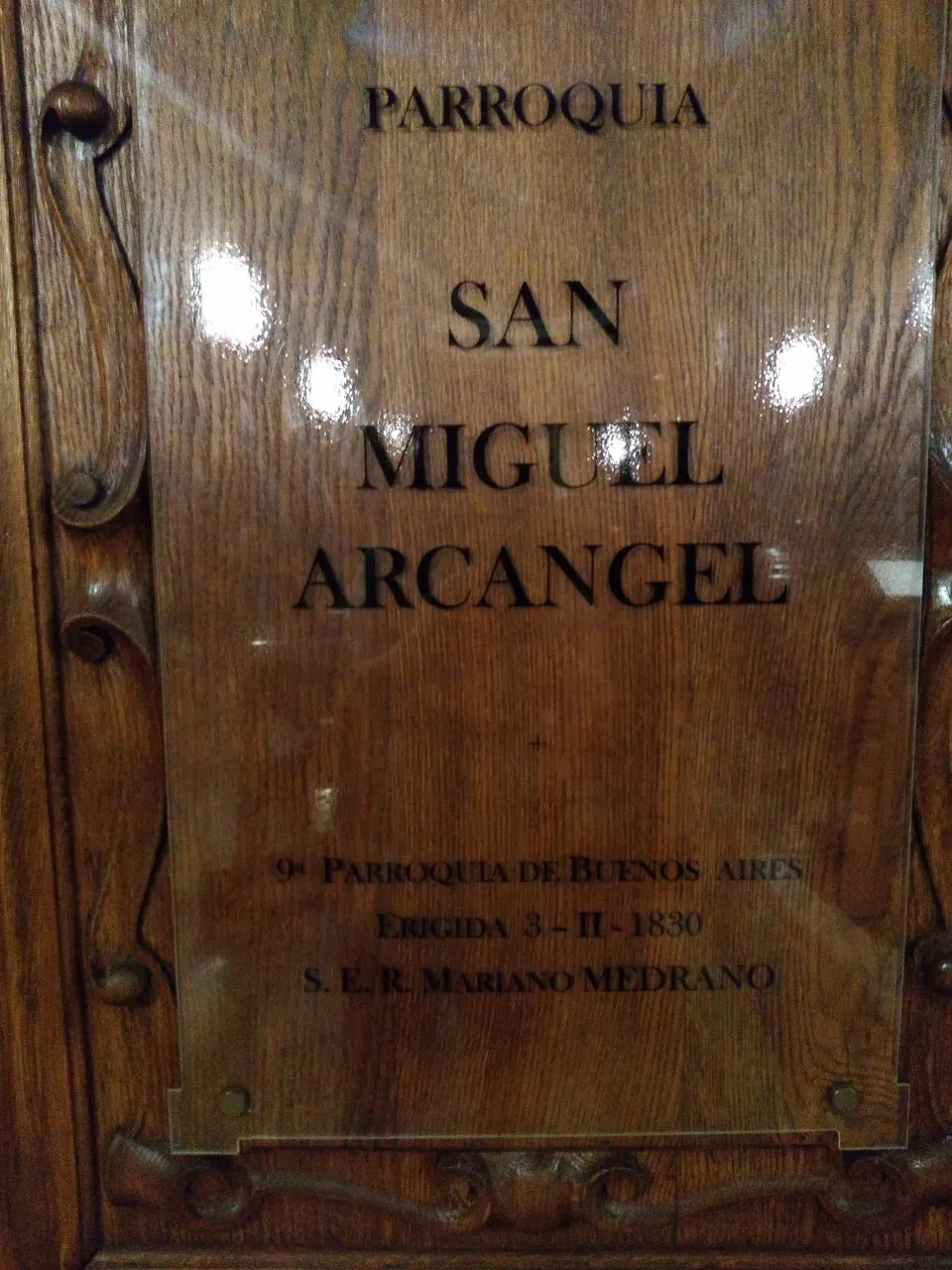
Stained glass windows and paintings in honor of St. Michael adorn the inner walls, where confessionals can be seen as soon as you enter the chapel, which made me wonder, are there still adults who confess their sins?
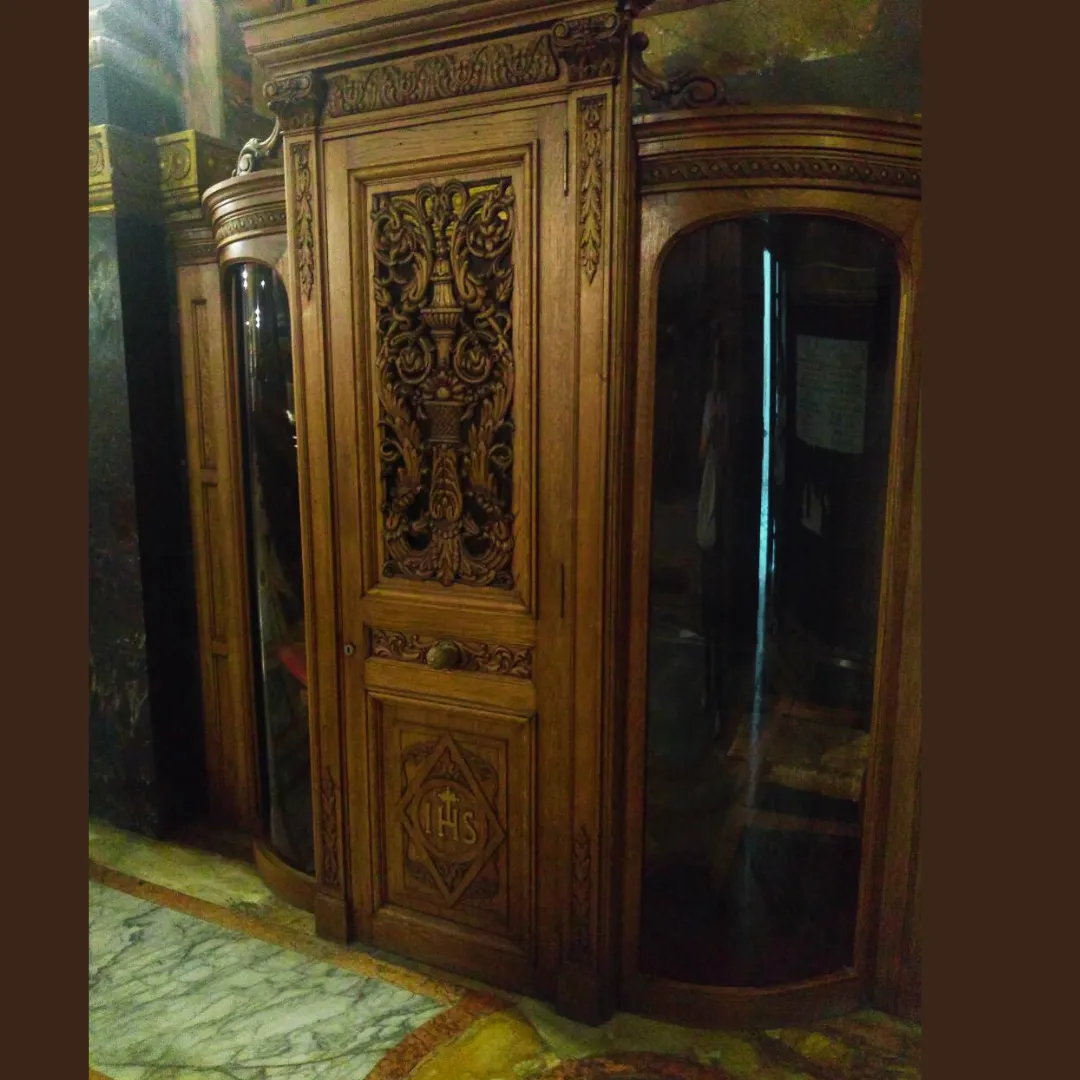
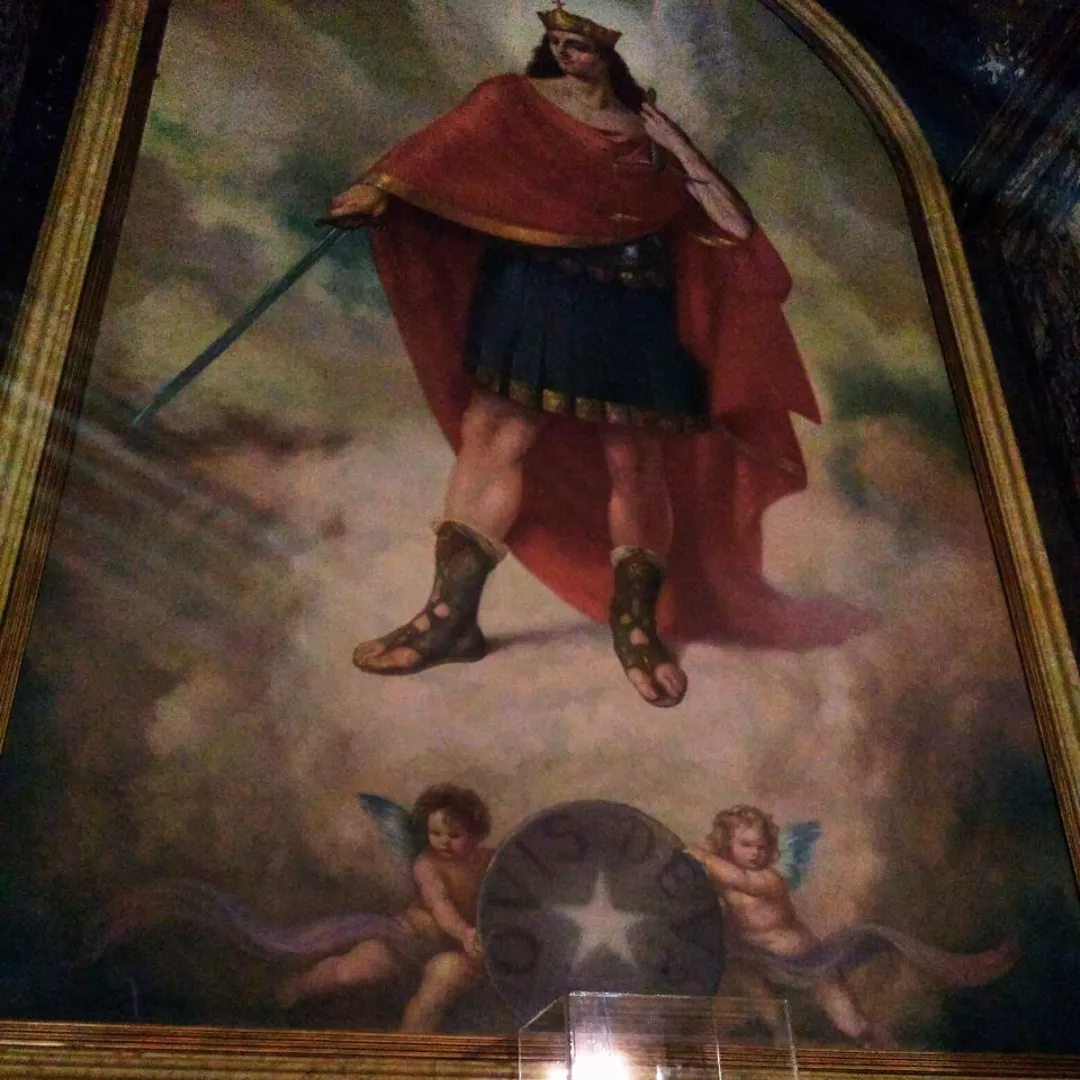
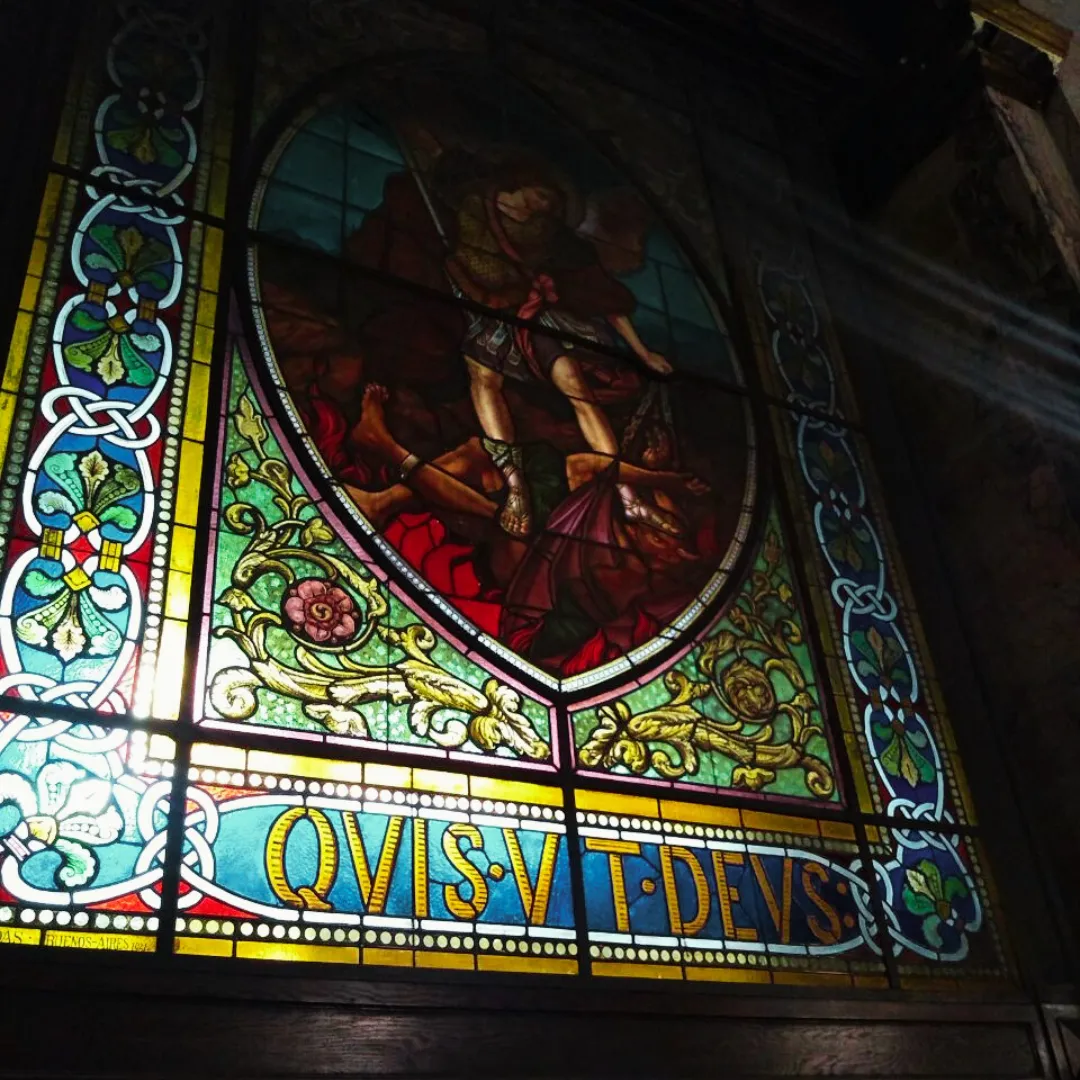
The wooden benches arranged in the center invite you to sit and listen to the creaking of the wood. Seeing them made me remember when my dad used to take us to church when I was a child, I would use the space to kneel as if it were a gymnast's balance beam.

As I neared the altar, it was inevitable to look up at the dome-shaped ceiling, decorated with paintings depicting references to the mass and pilgrimage.
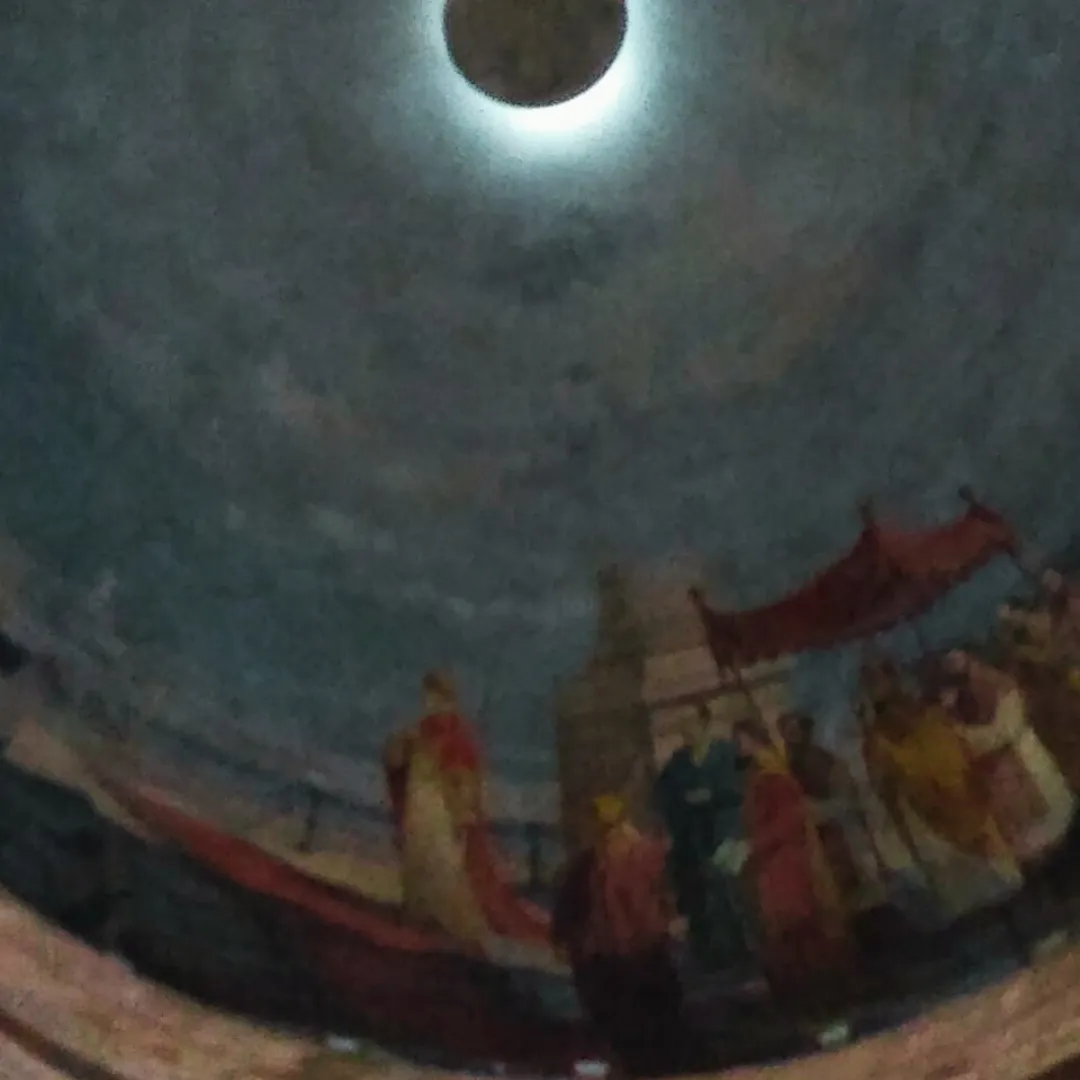

Something that caught my attention was the presence of two baptismal fonts, a large one near the door, and a smaller one with statues representing the baptism of Jesus Christ by John the Baptist.
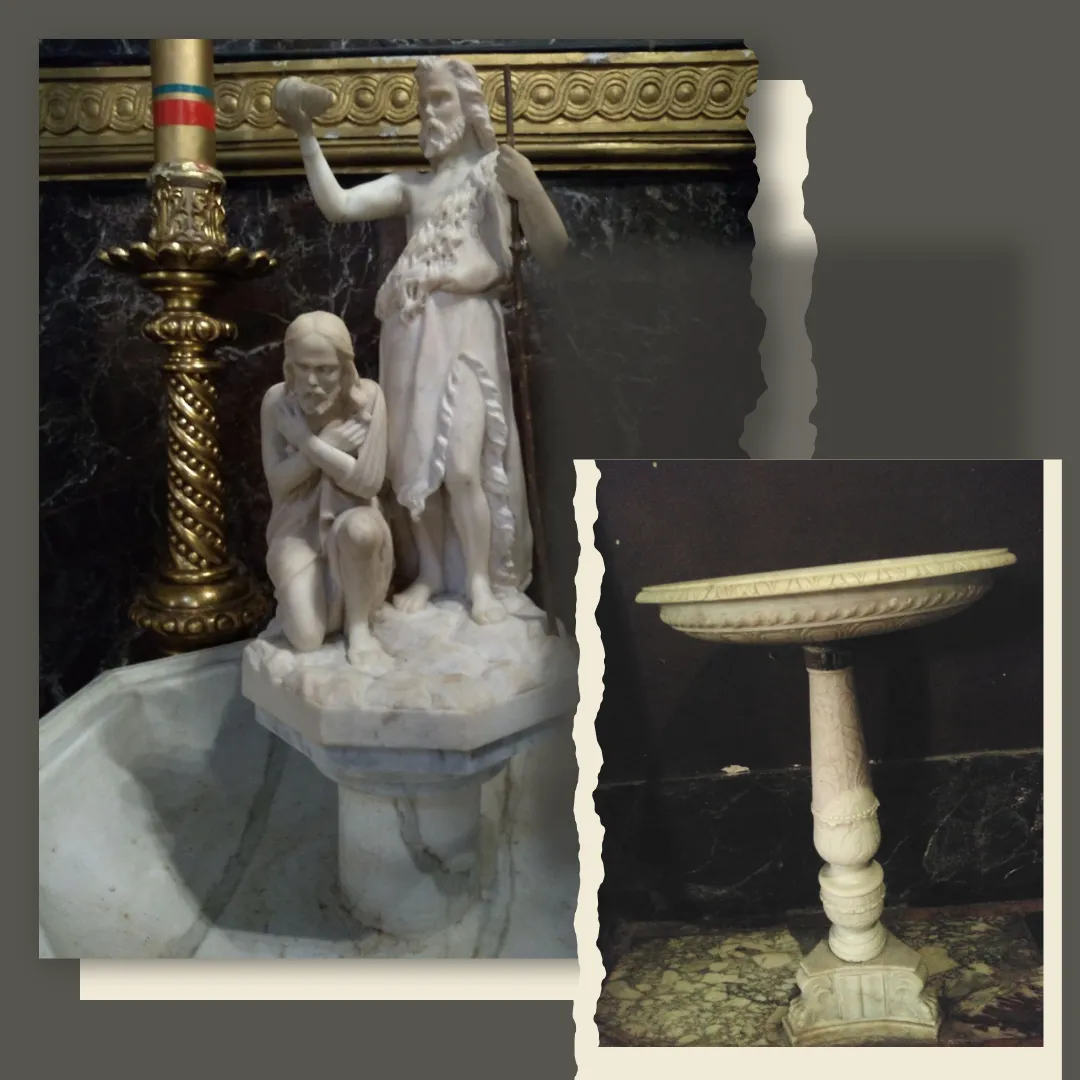
There are also some statues of saints, some more realistic and colorful, unlike others that are completely white.
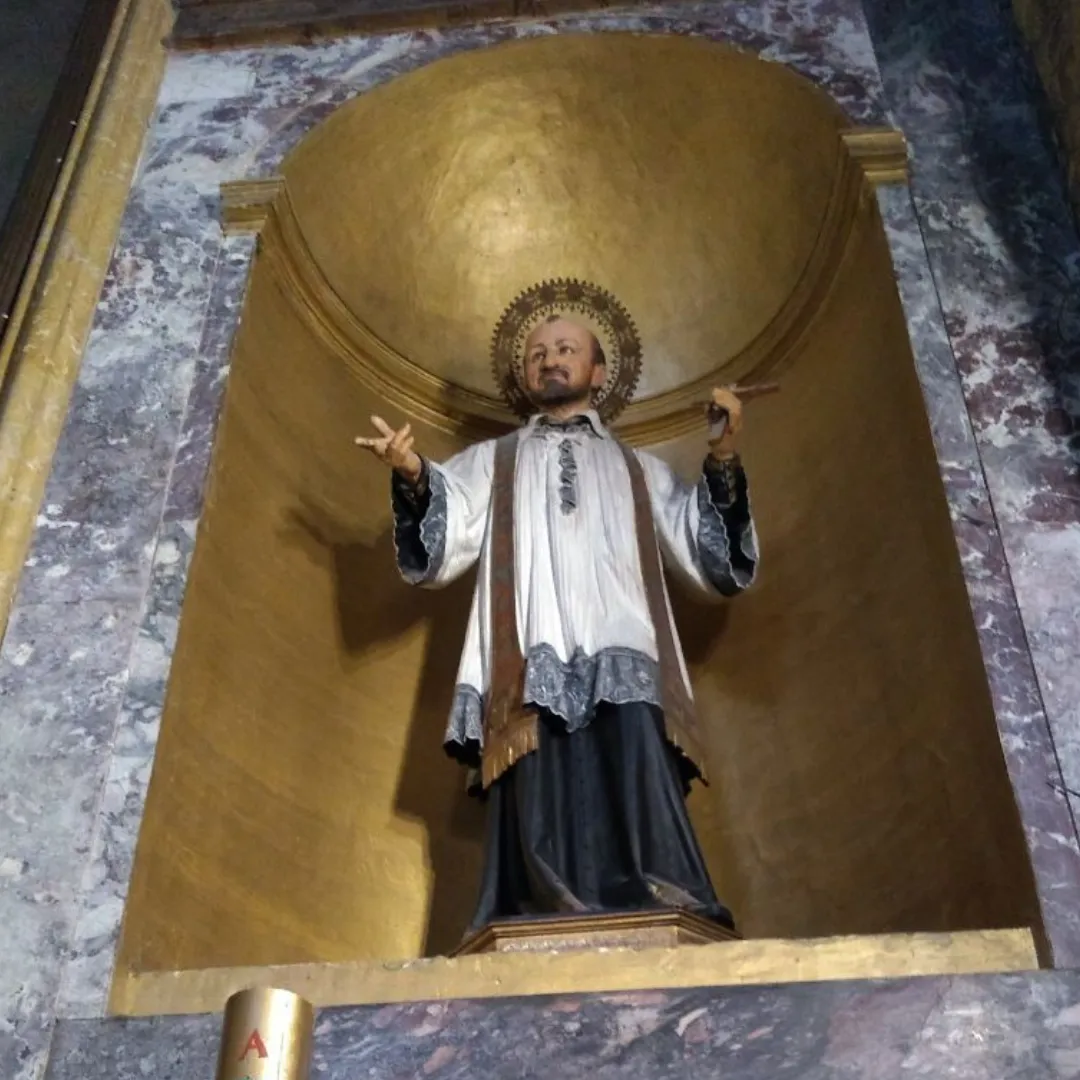
The image of Our Lady of Luján, patroness of the Argentinians, has its space in one of the side areas, there are four in the whole enclosure, allowing the faithful to pray separated from the rest of the people inside the church.
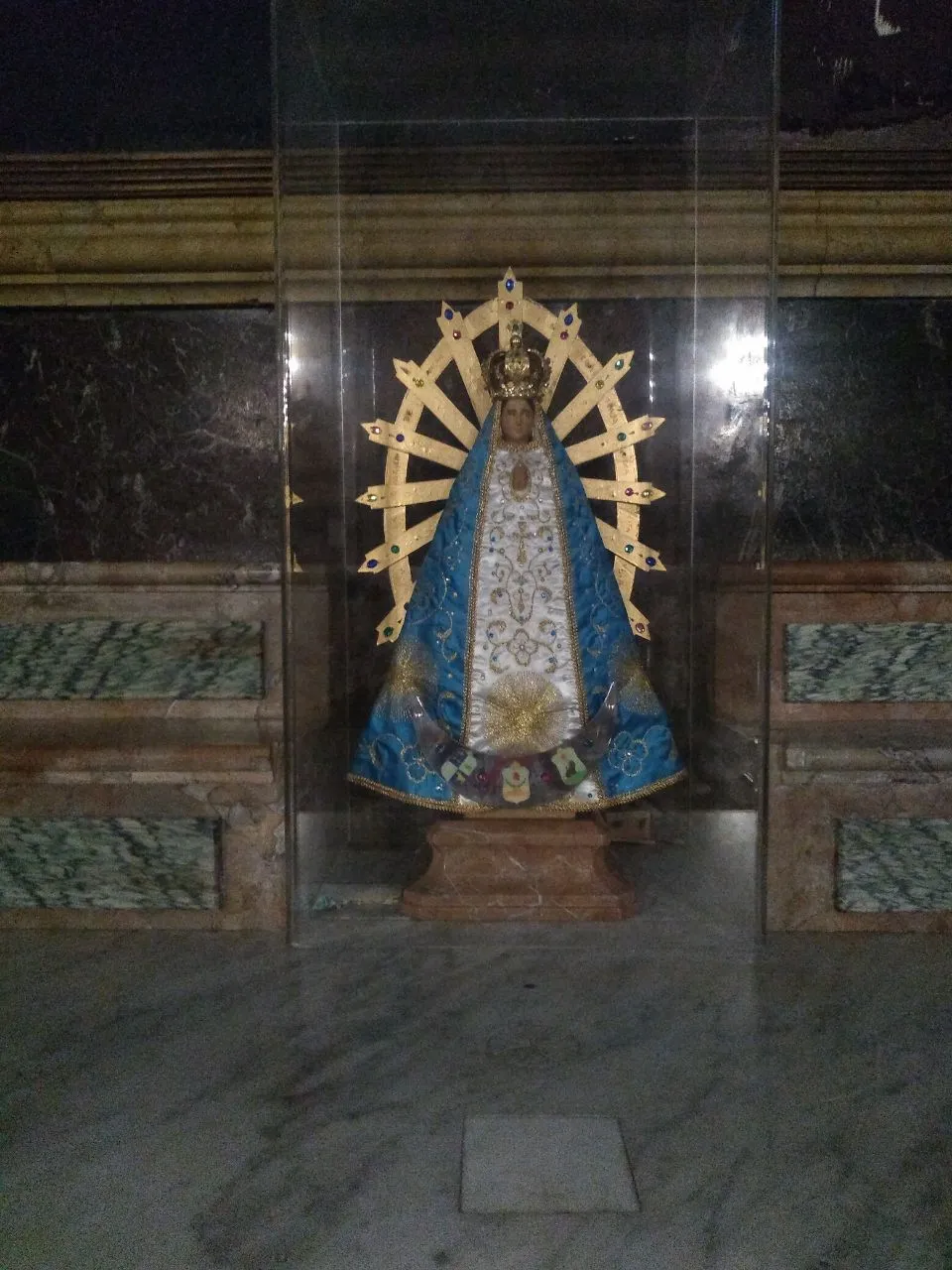
Another detail that I really liked was that at the back of the altar there is a life-sized painting of the 12 apostles gathered at the moment when the resurrected Jesus Christ appeared to them to deliver the message that he had not died, and that it was up to them to spread the Catholic religion throughout the world.
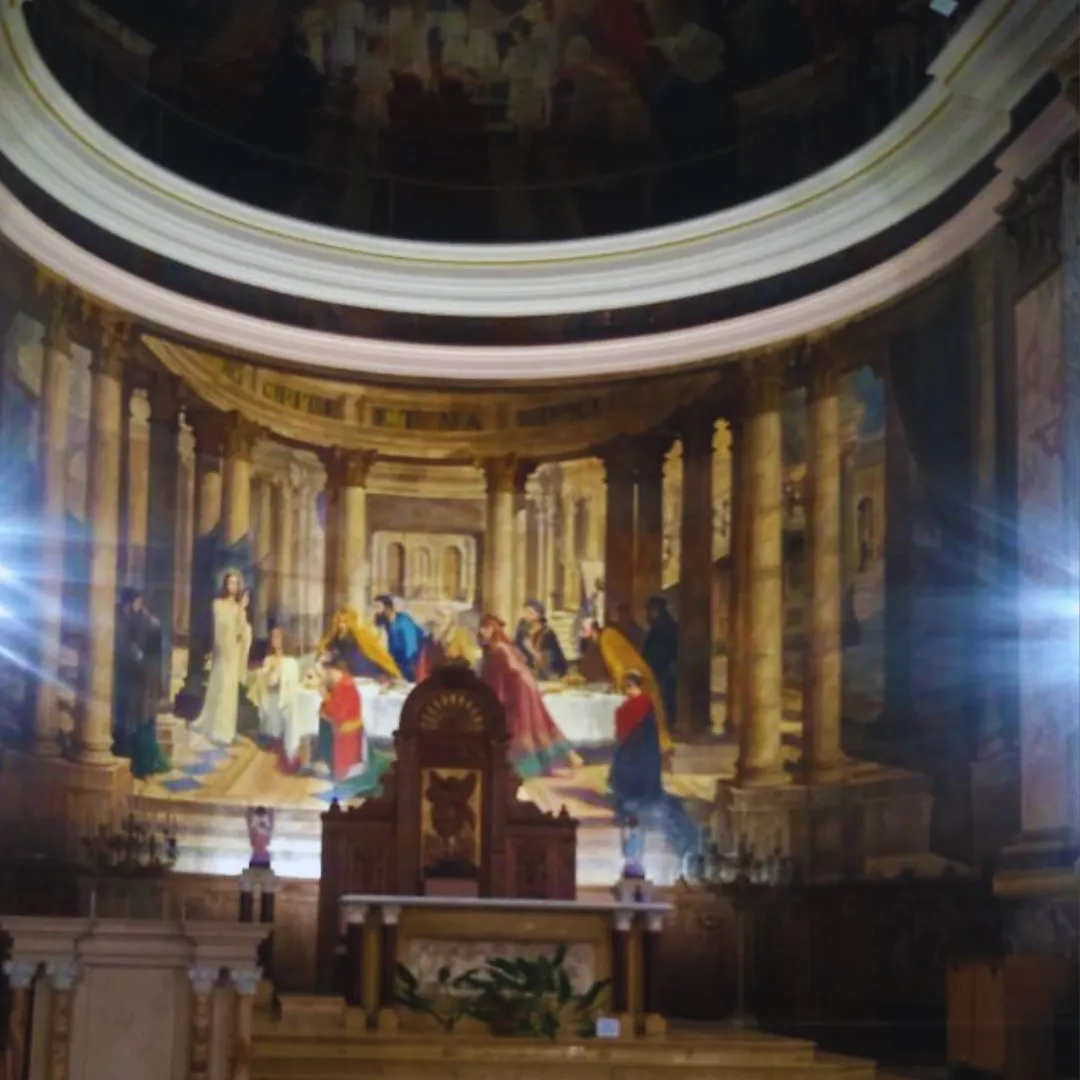
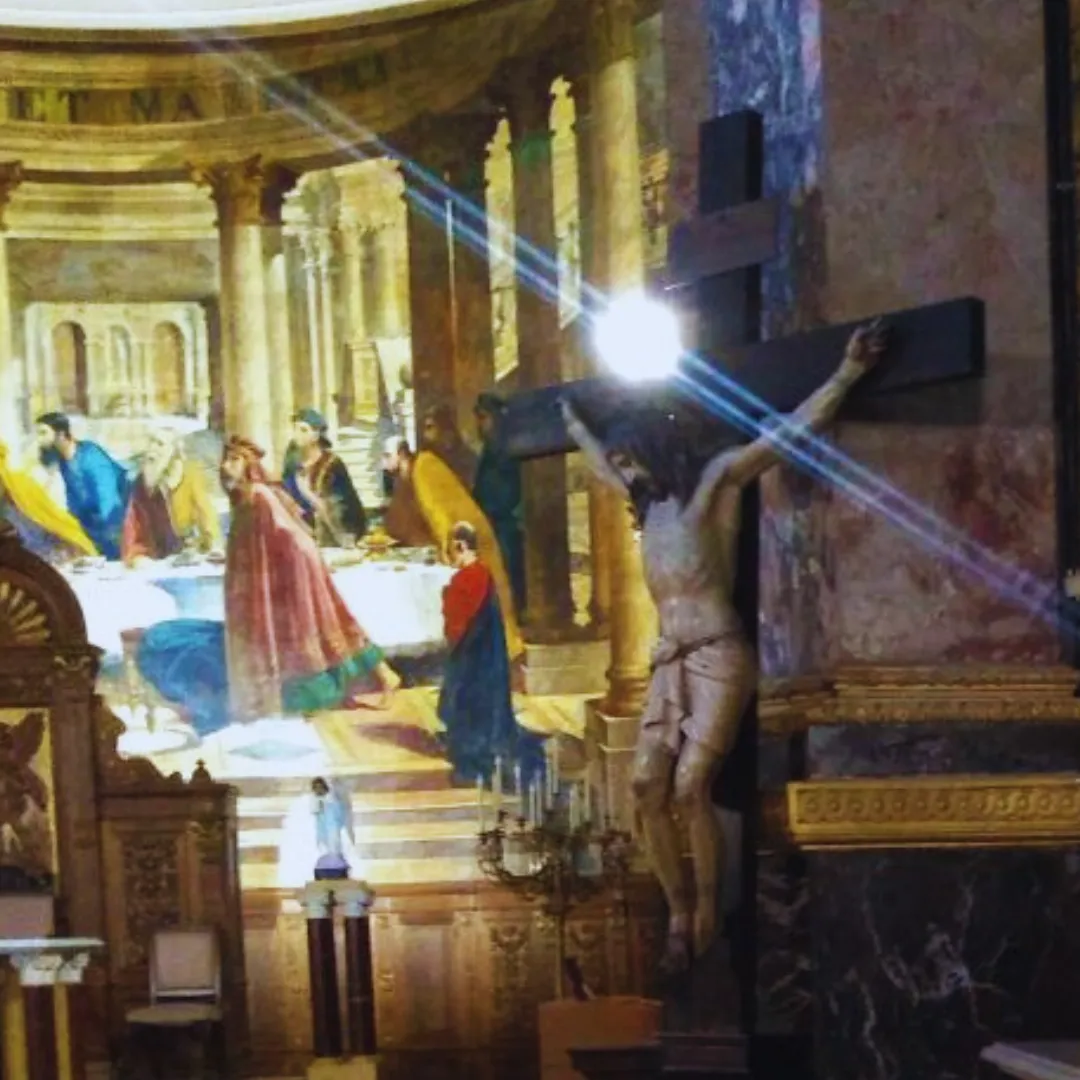
Unlike other churches, where the image of Christ crucified is usually found at the back of the altar, here it was located to the side of the altar.
Perhaps not intentionally, but this arrangement makes me think that subliminally it is meant to show parishioners that they should not view religion as something sacrificial, but rather as a source of inspiration that motivates faith to believe that even the impossible is possible if one believes in it.
After documenting as much as I could (until the few present began to give me strange looks), I knelt down and prayed for a while, also shedding some tears and leaving my questions and concerns about what I have been going through lately. Upon leaving, I took a photo to remember not only the visit, but also the message of renewal that faith gives us in what we believe in.
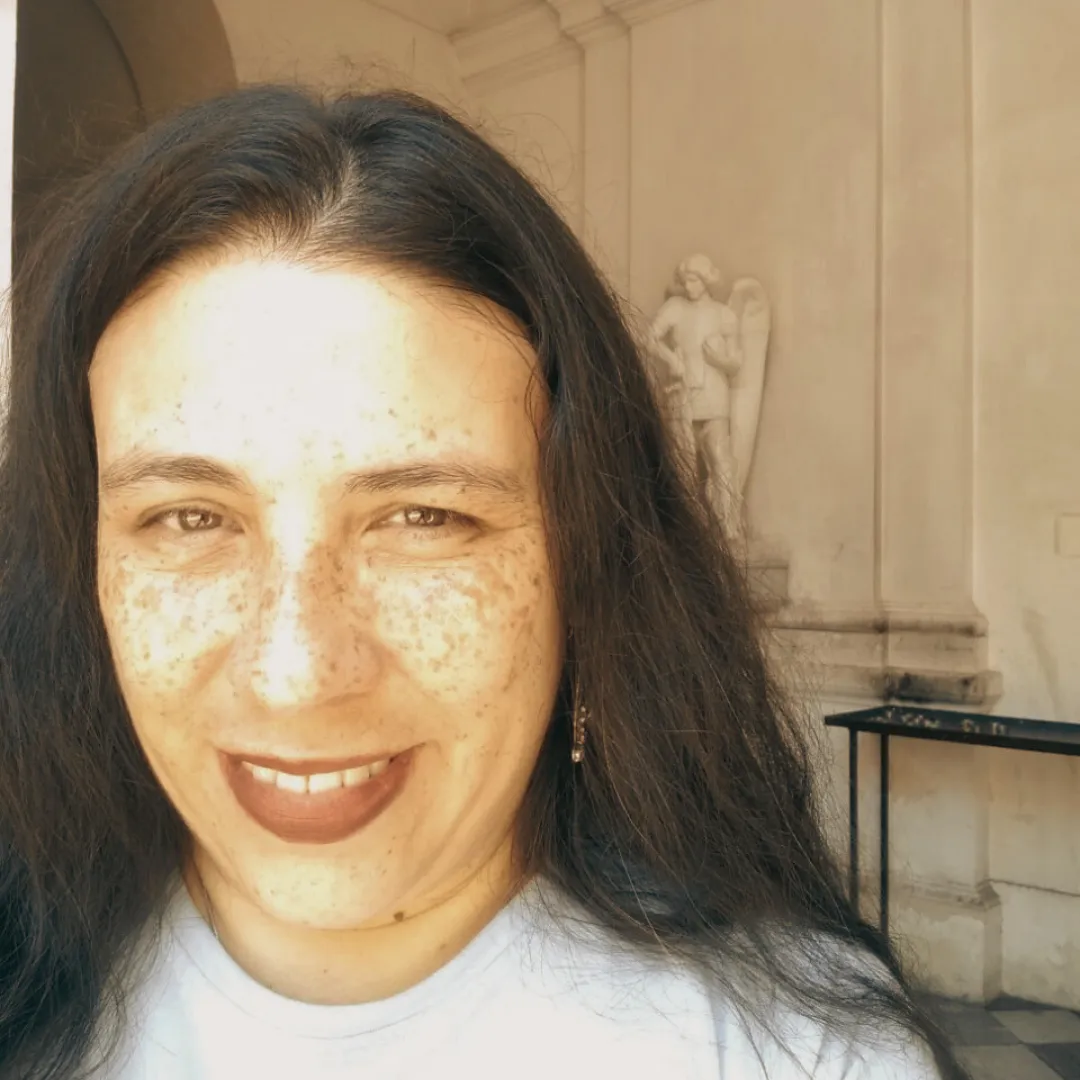

A veces, sucede que las cosas y experiencias llegan sin haberlas buscado. Fue así como caminando por las calles de Buenos Aires, me encontré con esta majestuosa iglesia de estilo renacentista, ubicada en las adyacencias del emblemático Obelisco bonaerense, que es referencia visual de Argentina en el mundo.
Ubicada en la esquina de Suipacha, y rodeada por edificios de estilo colonial que funcionan como oficinas y estacionamientos, esta iglesia fue un descubrimiento de algo que no me esperaba. Probablemente, el haber estado los días previos con una tristeza por problemas personales, me llevó en esta caminata sin rumbo fijo, a visitarla en la calle Bartolomé Mitre del barrio San Nicolás de Buenos Aires.

Aunque profeso la religión católica, no soy asidua de ir a las iglesias, y mucho menos actualmente que mi tiempo es bastante reducido, sin embargo, al ver este monumento, fue irresistible no querer entrar, y por suerte se encontraba abierta.
Es una estructura asimétrica de 3 secciones, en las que se destaca la del extremo izquierdo por ser la que tiene la parte más alta, ya que es en ese lado donde se encuentra el campanario.
Unas columnas dobles e imponentes sostienen el segundo piso de toda la iglesia, mientras que el tercero está apoyado solo en columnas sencillas. Al medio, se encuentra la puerta de entrada, en la que la figura de San Miguel Arcangel pisa la representación del ángel del mal. De lado a lado sobre la puerta, se puede leer la frase "S. Michael defendenos in proelio" que significa: "San Miguel defiendenos en la batalla"

Pero si por fuera ya me parecía hermosa, al momento de entrar, se hizo la magia. Dos estatuillas blancas representando a San Gabriel y a San Miguel defienden la segunda puerta de entrada hecha en madera, y en la que podemos leer parte de la historia de la iglesia, como lo es la fecha de erigida que fuera un 3 de noviembre de 1830.

Vitrales y pinturas en honor a San Miguel adornan las paredes internas, en las que se observan los confesionarios apenas entras a la capilla, cosa que me hizo preguntarme, ¿acaso todavía habrá gente adulta que se confiese?



Los bancos de madera dispuestos en la parte central, invitan a sentarse y escuchar los crujidos propios de la madera al contacto. Verlos, me hizo recordar cuando papá nos llevaba a misa siendo yo una niña pequeña, ya que yo utilizaba el espacio para arrodillarse como si fuera la barra de equilibrio de una gimnasta.

Ya casi llegando al altar, fue inevitable subir la mirada al techo, dispuesto en forma de cúpula, y en el que se pueden apreciar pinturas sobre pasajes alusivos a la misa y a la peregrinación.


Algo que me llamó la atención fue la presencia de dos pilas bautismales, una grande ubicada cerca de la puerta, y otra más pequeña, en la que se ven estatuillas que representan el bautismo de Jesucristo por parte de Juan el Bautista.

También están dispuestas algunas figuras de santos, las cuales son más realistas y coloridas, a diferencia de otras que son completamente blancas.

La imagen de Nuestra Señora de Luján, patrona de los argentinos, tiene su espacio en uno de los sectores laterales, que son cuatro en todo el recinto, y que permiten el retiro de los fieles para rezar de manera separada del resto de las personas que se encuentren dentro de la iglesia.

Otro detalle que me gustó mucho, fue que al fondo del altar se encuentra una pintura de tamaño real con los 12 apóstoles reunidos en el momento preciso que Jesucristo resucitado se les presentó, para darles el mensaje de que no había muerto, y que de ellos dependía que la religión católica se expandiera por el mundo.


A diferencia de otras iglesias, en las cuales en el fondo del altar se encuentra la imagen de Jesucristo crucificado, en esta se encontraba a un costado del altar. Quizás no sea con esta intención, pero esta disposición me hace pensar que subliminalmente se quiere hacer ver a los feligreses, que no hay que pensar en la religión como algo sacrificado, sino más bien como una compañía que motiva la fe en creer que hasta lo imposible, es posible si se cree en ello.
Luego de documentar lo más que pude (hasta que empezaron a verme raro los pocos que estaban presentes), me arrodillé y oré un rato, lloré también y dejé mis preguntas e inquietudes sobre lo que estoy pasando últimamente. Al salir, tomé una foto para recordar no solo la visita, sino también ese mensaje de renovación que nos da la fe en aquello que creemos.

Foto/Photo by: @mamaemigrante
Edición/Edited by @mamaemigrante using canva
Tattooworld animated banner
Translated and formatted with Hive Translator by @noakmilo.
